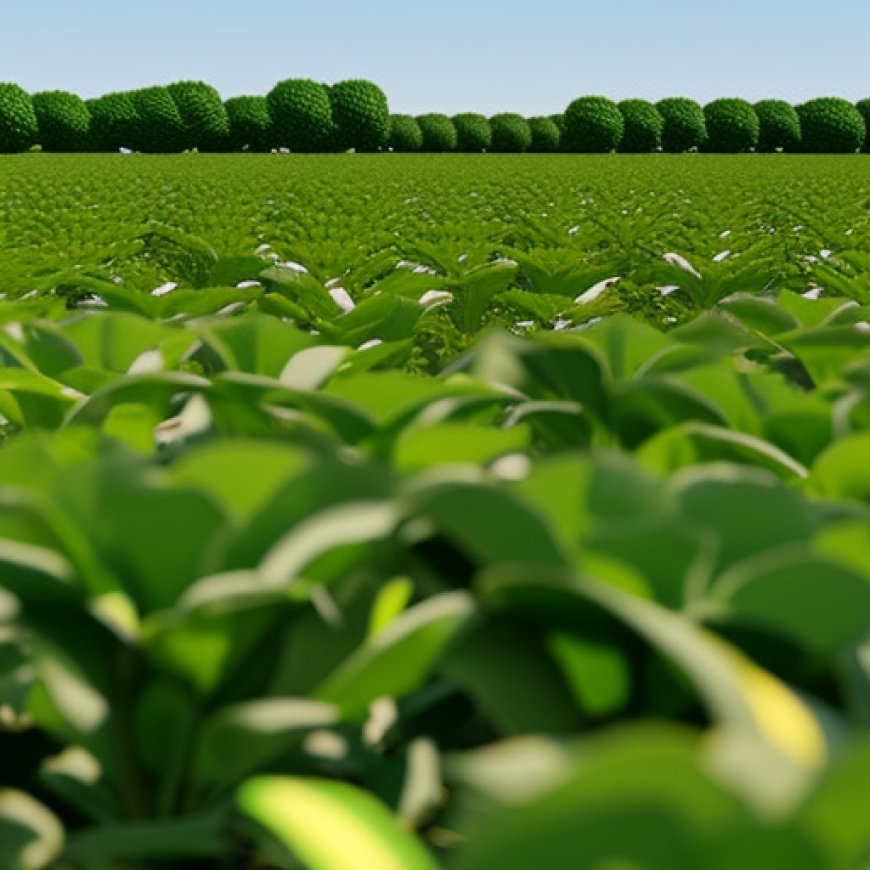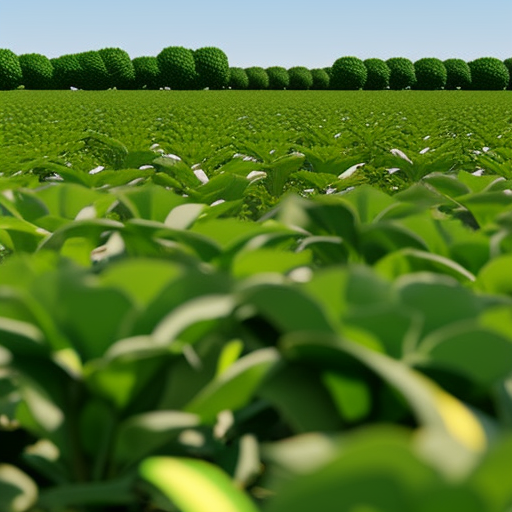Developing Perennial Ground Cover for Corn Systems in the Midwest
Developing Perennial Ground Cover for Corn Systems in the Midwest Morning Ag Clips -


Iowa Learning Farms Virtual Field Day Scheduled for March 21 at 1 p.m. CT

The vision of RegenPGC is to make year-round ground cover on working lands the norm for Midwestern U.S. agriculture and beyond. (RegenPGC)
About the Event
Iowa Learning Farms, in partnership with the Iowa Nutrient Research Center (INRC) and Conservation Learning Group (CLG), is hosting a free virtual field day on Thursday, March 21 at 1 p.m. CT. The event will feature a live discussion with D. Raj Raman, Morrill Professor of Agricultural & Biosystems Engineering at Iowa State University, and Daniel Andersen, Associate Professor of Agricultural & Biosystems Engineering at Iowa State University.
About RegenPGC
RegenPGC stands for Regenerating America’s Working Landscapes to Enhance Natural Resources and Public Goods through Perennial Groundcover. The vision of RegenPGC is to make year-round ground cover on working lands the norm for Midwestern U.S. agriculture and beyond. The project focuses on developing and de-risking perennial groundcover (PGC) systems, where a perennial cover crop is planted once and then persists for multiple years alongside annual crops such as corn and soybean.
The RegenPGC project started nearly two decades ago with Dr. Ken Moore and his team exploring ways of planting a perennial cover between rows of corn. Early successes led to funding from the Sun Grant program, INRC, and others, eventually receiving support from USDA’s-National Institute for Food and Agriculture Sustainable Agricultural Systems Coordinated Agricultural Projects program. RegenPGC officially began in September 2021 as a 5-year transdisciplinary project combining research, extension, education, and commercialization efforts.
According to Andersen, one of the goals of the project is to find a perennial ground cover that can be paired with corn in both space and time. Kentucky bluegrass has shown promise as a complementary species, similar to what most people have in their lawns. In this system, the grass grows between the rows with a strip-till zone for the corn plant. The grass and corn have opposite growth periods, reducing competition. Teams are also working on breeding for both corn and perennial ground cover, as well as methods to encourage senescence to further reduce competition. Another team is focused on quantifying the ecological benefits of the system, including reduced erosion and nitrogen leaching, as well as impacts on weed pressure and insects.
Virtual Field Day Access Instructions:
- To participate in the live virtual field day at 1:00 pm CT on March 21, click this URL: https://iastate.zoom.us/j/98608335082 or visit https://www.iowalearningfarms.org/events-1.
- Alternatively, join from a dial-in phone line:
Dial: 309-205-3325 or 312-626-6799
Meeting ID: 986 0833 5082
The field day will be recorded and archived on the ILF website for future viewing. The archive will be available at https://www.iowalearningfarms.org/virtual-field-day-archive.
Participants may be eligible for a Certified Crop Adviser board-approved continuing education unit. Information about how to apply to receive the CEU (if approved) will be provided at the end of the event.
About the Speakers
D. Raj Raman is the Morrill Professor of Agricultural & Biosystems Engineering at Iowa State University.
Daniel Andersen is the Associate Professor of Agricultural & Biosystems Engineering at Iowa State University.
About Iowa Learning Farms
Established in 2004, Iowa Learning Farms is building a Culture of Conservation by encouraging adoption of conservation practices. Farmers, researchers, and ILF team members are working together to identify and implement the best management practices that improve water quality and soil health while remaining profitable. Partners of Iowa Learning Farms include the Iowa Department of Agriculture and Land Stewardship, Iowa State University Extension and Outreach, Leopold Center for Sustainable Agriculture, USDA Natural Resources Conservation Service, Iowa Department of Natural Resources (USEPA section 319), and GROWMARK, Inc. [1] Distinguished Professor of Agronomy, and RegenPGC Educational Theme Leader
— Iowa Learning Farms
SDGs, Targets, and Indicators in the Article
1. Which SDGs are addressed or connected to the issues highlighted in the article?
- SDG 2: Zero Hunger
- SDG 13: Climate Action
- SDG 15: Life on Land
2. What specific targets under those SDGs can be identified based on the article’s content?
- SDG 2.4: By 2030, ensure sustainable food production systems and implement resilient agricultural practices that increase productivity and production, that help maintain ecosystems, that strengthen capacity for adaptation to climate change, extreme weather, drought, flooding and other disasters, and that progressively improve land and soil quality.
- SDG 13.2: Integrate climate change measures into national policies, strategies and planning.
- SDG 15.3: By 2030, combat desertification, restore degraded land and soil, including land affected by desertification, drought and floods, and strive to achieve a land degradation-neutral world.
3. Are there any indicators mentioned or implied in the article that can be used to measure progress towards the identified targets?
- Indicator for SDG 2.4: Adoption of sustainable agricultural practices, such as year-round ground cover on working lands.
- Indicator for SDG 13.2: Integration of climate change measures in the development and implementation of perennial groundcover systems.
- Indicator for SDG 15.3: Restoration of degraded land and soil through the implementation of perennial groundcover systems.
SDGs, Targets, and Indicators Table
| SDGs | Targets | Indicators |
|---|---|---|
| SDG 2: Zero Hunger | 2.4: By 2030, ensure sustainable food production systems and implement resilient agricultural practices that increase productivity and production, that help maintain ecosystems, that strengthen capacity for adaptation to climate change, extreme weather, drought, flooding and other disasters, and that progressively improve land and soil quality. | Adoption of sustainable agricultural practices, such as year-round ground cover on working lands. |
| SDG 13: Climate Action | 13.2: Integrate climate change measures into national policies, strategies and planning. | Integration of climate change measures in the development and implementation of perennial groundcover systems. |
| SDG 15: Life on Land | 15.3: By 2030, combat desertification, restore degraded land and soil, including land affected by desertification, drought and floods, and strive to achieve a land degradation-neutral world. | Restoration of degraded land and soil through the implementation of perennial groundcover systems. |
Behold! This splendid article springs forth from the wellspring of knowledge, shaped by a wondrous proprietary AI technology that delved into a vast ocean of data, illuminating the path towards the Sustainable Development Goals. Remember that all rights are reserved by SDG Investors LLC, empowering us to champion progress together.
Source: morningagclips.com

Join us, as fellow seekers of change, on a transformative journey at https://sdgtalks.ai/welcome, where you can become a member and actively contribute to shaping a brighter future.







